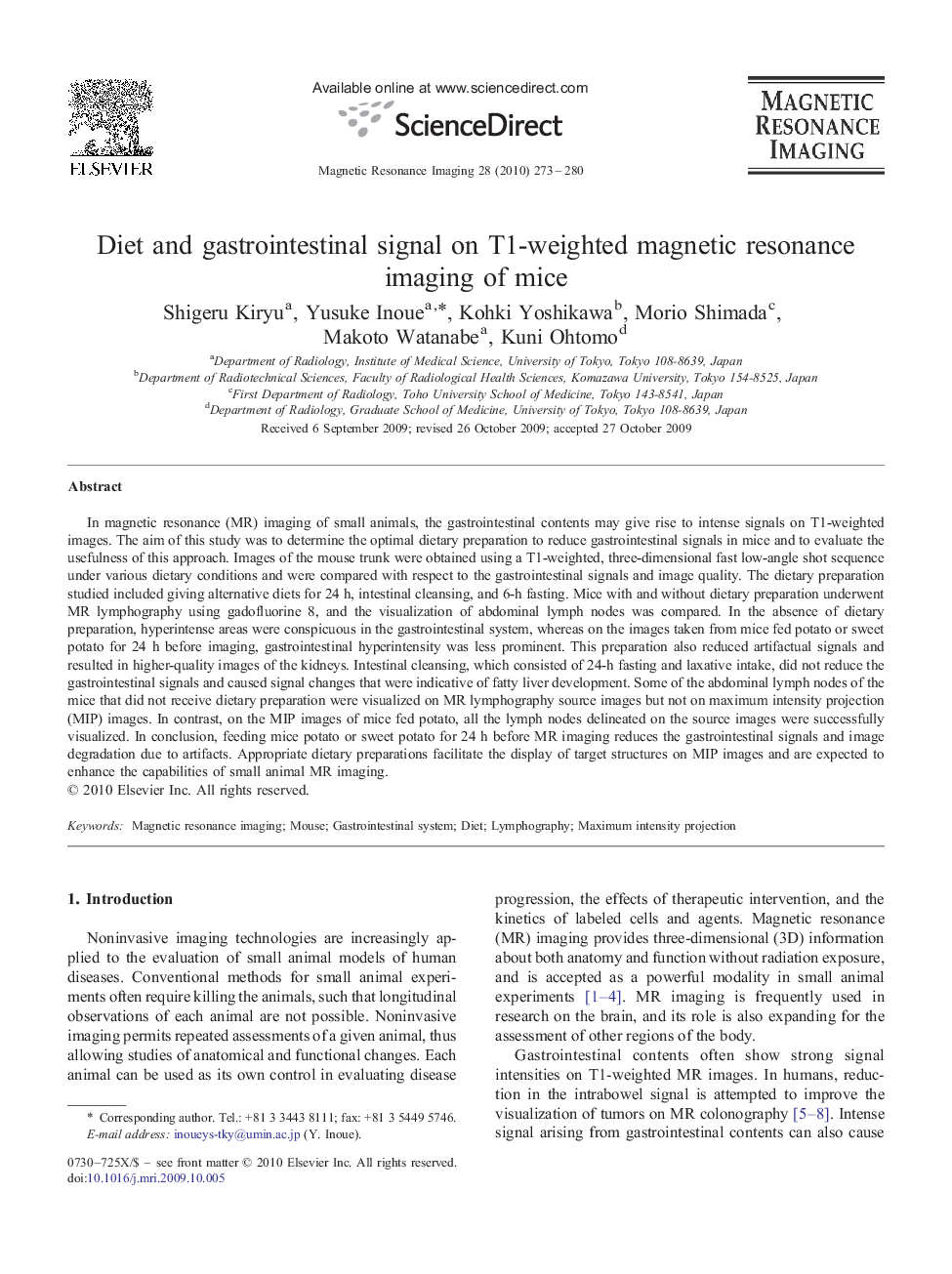| کد مقاله | کد نشریه | سال انتشار | مقاله انگلیسی | نسخه تمام متن |
|---|---|---|---|---|
| 1807070 | 1025241 | 2010 | 8 صفحه PDF | دانلود رایگان |
عنوان انگلیسی مقاله ISI
Diet and gastrointestinal signal on T1-weighted magnetic resonance imaging of mice
دانلود مقاله + سفارش ترجمه
دانلود مقاله ISI انگلیسی
رایگان برای ایرانیان
کلمات کلیدی
موضوعات مرتبط
مهندسی و علوم پایه
فیزیک و نجوم
فیزیک ماده چگال
پیش نمایش صفحه اول مقاله

چکیده انگلیسی
In magnetic resonance (MR) imaging of small animals, the gastrointestinal contents may give rise to intense signals on T1-weighted images. The aim of this study was to determine the optimal dietary preparation to reduce gastrointestinal signals in mice and to evaluate the usefulness of this approach. Images of the mouse trunk were obtained using a T1-weighted, three-dimensional fast low-angle shot sequence under various dietary conditions and were compared with respect to the gastrointestinal signals and image quality. The dietary preparation studied included giving alternative diets for 24 h, intestinal cleansing, and 6-h fasting. Mice with and without dietary preparation underwent MR lymphography using gadofluorine 8, and the visualization of abdominal lymph nodes was compared. In the absence of dietary preparation, hyperintense areas were conspicuous in the gastrointestinal system, whereas on the images taken from mice fed potato or sweet potato for 24 h before imaging, gastrointestinal hyperintensity was less prominent. This preparation also reduced artifactual signals and resulted in higher-quality images of the kidneys. Intestinal cleansing, which consisted of 24-h fasting and laxative intake, did not reduce the gastrointestinal signals and caused signal changes that were indicative of fatty liver development. Some of the abdominal lymph nodes of the mice that did not receive dietary preparation were visualized on MR lymphography source images but not on maximum intensity projection (MIP) images. In contrast, on the MIP images of mice fed potato, all the lymph nodes delineated on the source images were successfully visualized. In conclusion, feeding mice potato or sweet potato for 24 h before MR imaging reduces the gastrointestinal signals and image degradation due to artifacts. Appropriate dietary preparations facilitate the display of target structures on MIP images and are expected to enhance the capabilities of small animal MR imaging.
ناشر
Database: Elsevier - ScienceDirect (ساینس دایرکت)
Journal: Magnetic Resonance Imaging - Volume 28, Issue 2, February 2010, Pages 273-280
Journal: Magnetic Resonance Imaging - Volume 28, Issue 2, February 2010, Pages 273-280
نویسندگان
Shigeru Kiryu, Yusuke Inoue, Kohki Yoshikawa, Morio Shimada, Makoto Watanabe, Kuni Ohtomo,